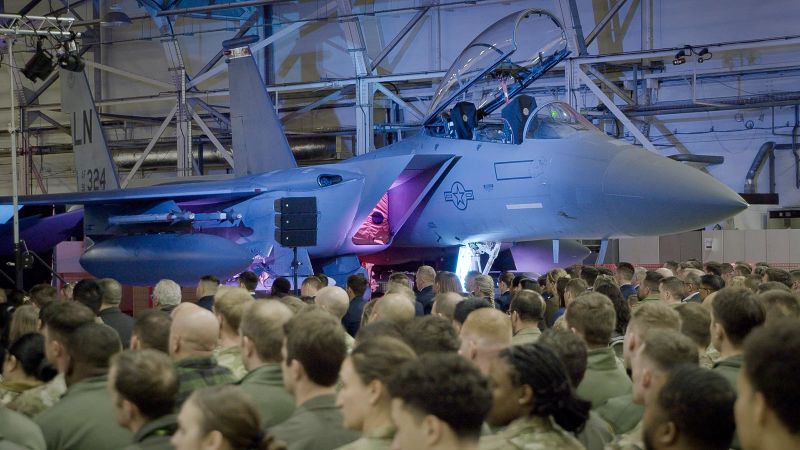Instructions

In an exclusive interview, CNN's national security correspondent Natasha Bertrand delves into the gripping firsthand accounts of US pilots who heroically defended Israel's airspace during the intense Iranian attack in April. Through riveting testimonies and personal video footage, these brave servicemen and ground crew members provide an unprecedented glimpse into the high-stakes aerial defense that thwarted a potential crisis, sharing their remarkable experiences of that critical night.
Guardians of the Sky: US Pilots' Heroic Defense Against Iranian Aerial Threat
In the high-stakes arena of international defense, military personnel often stand as silent sentinels, ready to protect sovereign airspace at a moment's notice. The events of April revealed an extraordinary testament to strategic readiness and international cooperation, where United States Air Force pilots demonstrated exceptional skill and precision in defending Israel's critical airspace against a potential Iranian attack.
When Eagles Rise: A Critical Moment in Geopolitical Defense
The Strategic Landscape of Aerial Intervention
The geopolitical tensions in the Middle East have long been characterized by complex diplomatic and military interactions. In this intricate environment, the United States military maintains a sophisticated network of strategic partnerships and rapid response capabilities. The April incident represented more than a mere defensive maneuver; it was a profound demonstration of technological superiority and international military collaboration.
Modern aerial defense requires an unprecedented level of coordination, technological integration, and split-second decision-making. US Air Force pilots, trained in some of the most demanding environments globally, embody a level of professional excellence that transcends conventional military expectations. Their ability to neutralize potential threats while maintaining precise operational protocols represents the pinnacle of military preparedness.
Technological Prowess and Human Expertise
The defense operation was not merely about advanced weaponry but a complex interplay between cutting-edge technology and human intuition. Sophisticated radar systems, real-time communication networks, and advanced fighter aircraft converged to create an impenetrable shield over Israeli territory.
Pilots involved in the mission underwent rigorous training that simulates scenarios far more complex than actual combat situations. Their psychological resilience, technical knowledge, and instantaneous decision-making capabilities transformed potential vulnerability into a robust defensive posture. Each pilot carried not just advanced equipment, but years of specialized training and an unwavering commitment to protecting allied nations.
Behind the Cockpit: Personal Narratives of Courage
Individual stories of bravery often get overshadowed by broader strategic narratives. However, each pilot who participated in the April defense mission brought a unique perspective and personal motivation. Some were seasoned veterans with multiple deployment experiences, while others were relatively junior officers proving their mettle in high-pressure scenarios.
Their personal accounts reveal a profound sense of professional duty that extends beyond national borders. The mission was not just about intercepting potential threats but symbolized a broader commitment to international security and diplomatic stability. These pilots represented more than their individual military branches; they embodied a collective commitment to global peace and strategic deterrence.
Technological and Tactical Insights
The defensive operation showcased an intricate blend of real-time intelligence gathering, advanced aircraft capabilities, and strategic positioning. Fighter jets equipped with state-of-the-art detection and interception systems created multiple layers of defensive capabilities that rendered potential offensive maneuvers ineffective.
Communication protocols during the mission were executed with surgical precision. Pilots maintained constant communication with ground control, sharing instantaneous data and receiving updated threat assessments. This seamless information exchange transformed individual aircraft into interconnected nodes of a comprehensive defensive network.
Broader Implications for International Security
The successful defense mission against potential Iranian aggression sent profound diplomatic signals beyond immediate military considerations. It reinforced the United States' commitment to regional stability and demonstrated the sophisticated deterrence capabilities maintained through strategic military partnerships.
International observers noted the mission's significance as a potential turning point in regional dynamics. The swift, professional response underscored the complex mechanisms of modern geopolitical interactions, where military preparedness serves as a critical instrument of diplomatic communication.

